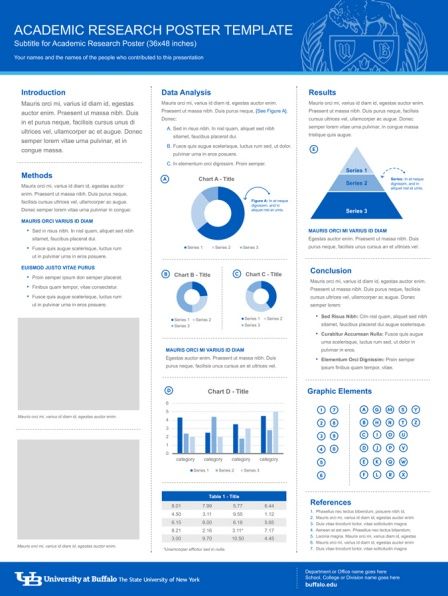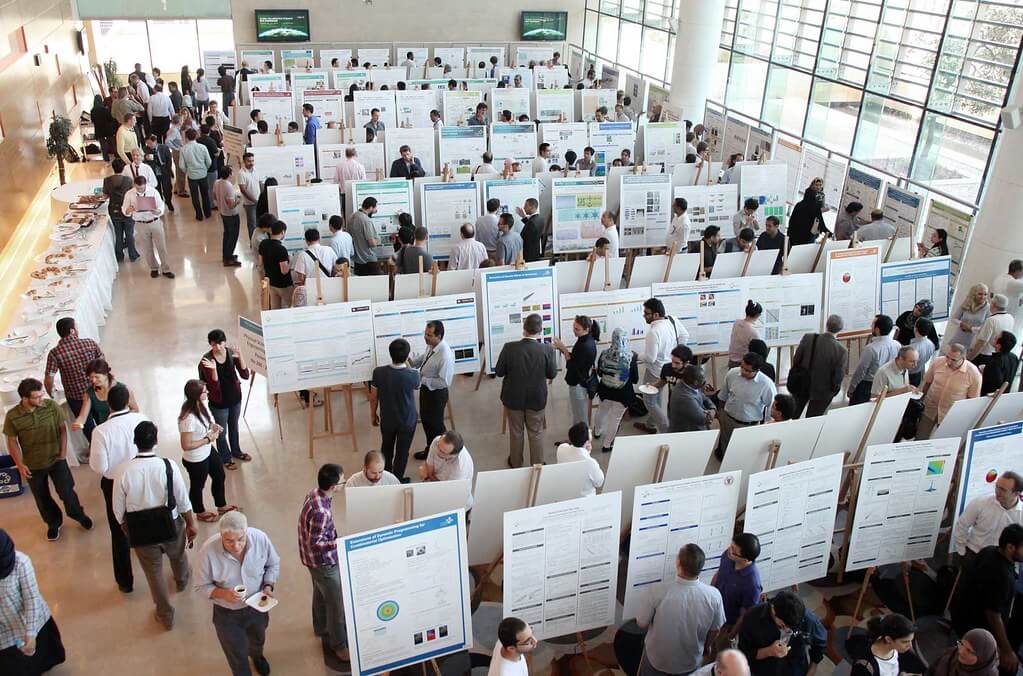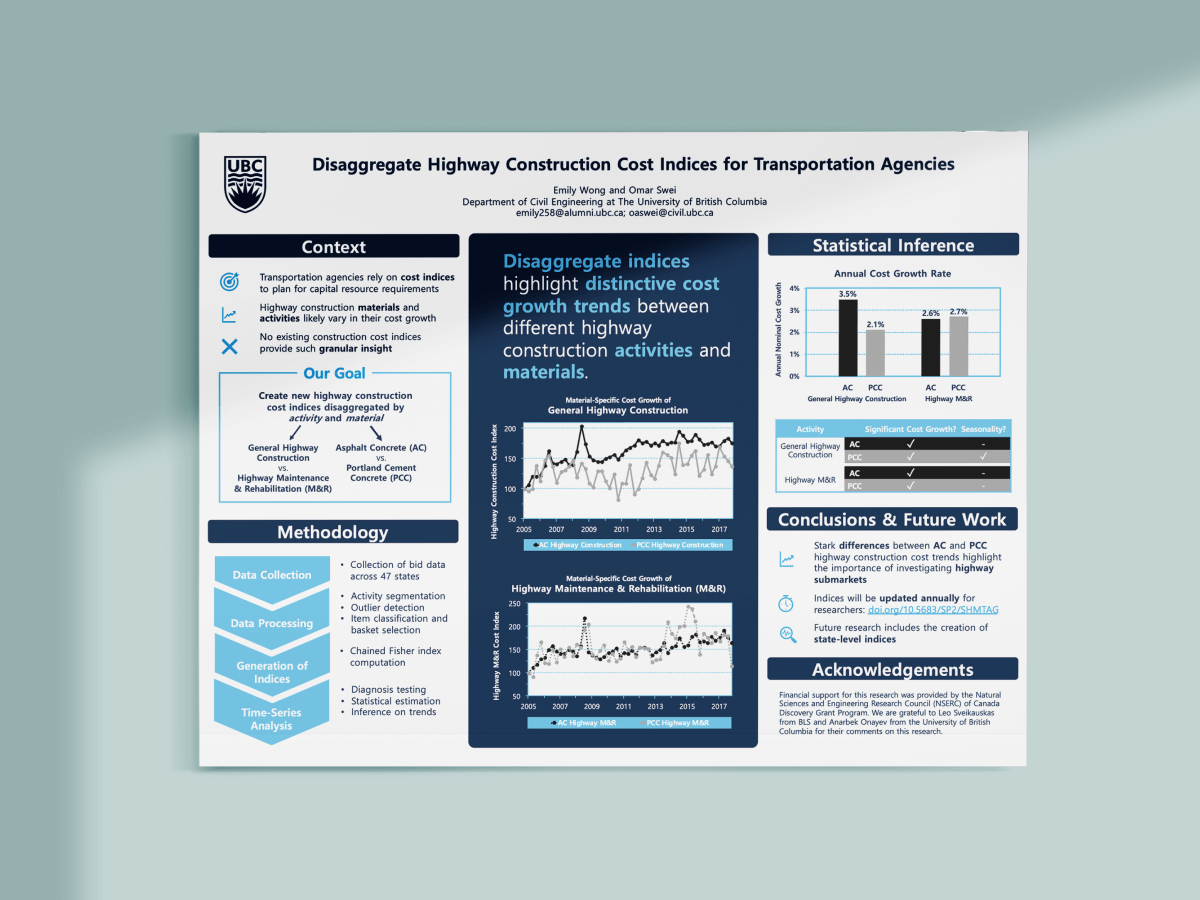Most university students struggle with the same question, how do make a research poster? To make matters worse, some of them do not have an idea of what a research poster is.
In short, students use research posters to present their work simply and conclusively. It shows the area of research, its sustainability, and most importantly, the ability to contribute to the research field of a renowned institution.
Research posters are valuable for researchers so that they can receive different feedback on their work, gather more ideas about how to improve the research poster, and many more.
With that being told, here are some basic elements that make up a research poster- attractive title ad abstract, methodology, result discussion, and representation and referring to how this particular research will benefit the community.
This article will discuss every aspect of how to make a research poster starting from planning, designing, presenting, reviewing, and even showing some examples.
Planning Your Research Poster

In order to set up good research poster examples, you first need to plan it efficiently with valid and effective information so as not to create a monotonous tone while the scholars look at your poster.
Hence, here are some helpful tips for planning your research poster:
Select a topic:
The most uprising challenge a researcher faces is to choose a relevant topic for their poster. One goal that everyone should keep in mind is that the topic must be engaging to the audience and have some potential window for future works. Therefore, narrowing down the topic can help focus the research study, making it easier to present on the poster.
Set up the core message:
No matter what you do, make sure to set up a core message the scholars will receive while looking at your research poster. This particular message should play a key role in your research and should be easy to understand for common visitors as well.
Narrow down your audience:
You should also consider the type of audience you’d like to focus on while presenting or showcasing your research poster. The level of detail and technical language used should be appropriate for the audience and the poster should be visually appealing and engaging to capture the audience’s attention.
Organize your layouts:
Organizing the layouts for your research poster is another major thing every researcher should worry about while planning. You should create the layouts in a logical manner such as clear headings and subheadings. Additionally, the content of the poster should flow easily while emphasizing the core message.
Feasibility:
You might consider the gravity of your research to be very much high, but if it’s not feasible in the real world, it will not receive the expected attention. Hence, your research topic should be feasible to conduct given the available resources and time.
Designing Your Research Poster

How to make a research poster with colorful designs, fonts, images, and many more? The key thing is to make it eye soothing to the audience’s eyes. Here are some helpful tips that you can follow:
Manage layout and dimensions:
The first thing you should consider while designing a poster is the dimensions. Normally, when you attend a conference or seminar, the dimensions are given in the rulebook. If not, the normalized dimensions for an effective research poster are 36 x 48 inches or 42 x 56 inches.
Use appropriate color schemes:
The color schemes of a research poster are the most important thing to attract the first attention of the audience. According to my intensive research, I’ve found that high color contrast with light-colored background posters is easier to catch eye attention and easy to read.
Add right-sized fonts:
With attractive color schemes, comes an attractive font size to differentiate the headings and subheadings. My suggestion will be to make the font size bigger so that people can easily read your research poster from a considerable distance. Additionally, you can even color code the headings or subheadings to make them more attractive for them.
Creating Your Research Poster
Now that you are certain about the structure and design of how to make a good poster for upcoming conferences, you’ll require additional help from reliable software to create one.
Some of the popular software used for creating good research posters are as follows:
Microsoft PowerPoint
PowerPoint is the most used software when it comes to creating research posters. There are numerous templates available according to your preferred dimensions. Here are the pros and cons that you should be familiar with:
Pros:
- The interface is user-friendly.
- This software is widely available.
- It provides numerous design options.
- It can export high-quality images.
Cons:
- The design options are limited compared to other software.
- It lags when the file gets larger.
Adobe Illustrator
Adobe Illustrator is the most advanced software for creating a research poster. It is widely available and creates a user-friendly interface for creating 3D objects or adding special effects.
Pros:
- It provides high-quality pictures with special effects rendering.
- It has numerous export options (JPG, PNG, PDF, EPS, and SVG).
- It has the ability to work on multiple layers.
Cons:
- It has a huge learning curve which is time-consuming for beginners.
Canva
Another graphic design tool that most people suggest for creating research posters is Canva. It offers a lot of templates with customized design options. Canva offers both free and premium packages that will assist you in creating the least sophisticated design for your poster.
Pros:
- The interface is user-friendly.
- It offers numerous design options.
- It comes with a free version.
Cons:
- The free version has limited design options.
- The image quality is comparatively poor.
When it comes to printing, you should conduct some research to find the best printing facility around you. That printing service should fulfill your demand such as printing at correct poster sizes with good image printing quality at a reasonable price.
Additionally, while looking for a printing service, make sure to check their ratings and reviews which will ensure their printing background. Moreover, check for any printing mistakes and notify them accordingly. Before submitting your poster file for printing, make sure to proofread it more than once and correct it if there are any mistakes.
Presenting Your Research Poster

Now comes the most crucial part, presenting your research poster in front of the audience. If you have a presentation prepared, make sure to practice it so many times until you reach fluency.
Additionally, make sure that your languages are simple so that people can easily understand them. Also, include more information about the goal of your research in your presentation.
You need to provide more focus on the graphical analysis of your research poster so that people can easily understand your work. Last, but not least, make sure to interact with the audience so that the environment doesn’t become monotonous.
At the end of your presentation, greet your audience for any kind of question and answer session (if they have any).
Reviewing And Revising Your Research Poster
As you comfortably pass the question-and-answer session, it is your job to note down all the mistakes or modifications the audience has suggested to you.
When you present your modified research work to another conference, make sure to add or correct all those mistakes which will improve your poster and certainly gain more popularity.
The key thing is to revise your research poster every time you get the chance. Look for any grammatical mistakes, or formatting mistakes. These small corrections may not sound like a big deal, but it will be an embarrassing moment if someone points them out during a presentation.
You can also share your research poster with other researchers or even your professors. Once they review your work, they can add some modifications to your poster which will make your work even more promising.
Key Elements of a Research Poster
As mentioned earlier, there’re certain key elements in how to make a good poster. These key elements include the title, introduction, methodology, results, discussion, and conclusion.
- Title: You should make an attractive title that will represent your research work and will also create interest in the readers to visit the whole poster.
- Introduction: Your introduction should provide an overview of your research, including its purpose and significance. It should also include the main work and its impact on the topic.
- Methodology: This step should include all types of methods you’ve used to conduct your research. For example, if you are doing a comparative analysis on certain parameters, make sure to add some block diagrams and bold out the parameters that you’ve compared.
- Results and Discussions: The result section should contain all the findings that you’ve gathered from your research. It should add all the possible graphical analyses, tables, and charts to prove your hypothesis.
The discussion part will have a detailed explanation of all the parameters that you’ve used to bring out the analysis and explain the novelty and benefit of your research findings.
- Conclusion: Your conclusion should summarize the main points of your research and highlight its significance. It should also provide a clear answer to your research questions or hypotheses.
Furthermore, if there’s any scope for future work to your research, make sure to add those in your conclusion so that future researchers can gather some encouragement from your work.
Examples Of Effective Research Posters
As they say, a good poster creates a good first impression! Suppose you need to learn how to make a good poster for school. An effective example will be to show the difference between a clumsy and a good research poster.
If you look at the image below, you will see that the first research poster contains so many details of the work, but it’s not eye-soothing to look at. Why? Because the writer used small fonts with less graphical information.
As mentioned earlier, instead of jamming the whole research, your job will be to highlight the important information, like the poster on the right-hand side.
It has some excellent color schemes with colorful and large fonts and not to mention, numerous graphical analyses for better understanding. In simpler terms, the poster on the right-hand side fulfills all the criteria of an effective research poster.
For those who are beginners, it will be an excellent visual example!
Example of an effective research poster
Conclusion
In conclusion, a research poster is a valuable tool for presenting your research findings to a wider audience. When done effectively, it can help you communicate your research in a clear and visually appealing manner, making it more accessible to others.
Additionally, research posters are important because it provides the simplest way to explain your research work at a conference. Therefore, before participating in a poster presentation, make sure to follow all the guidelines to include all the core information and make it visually effective.

Hi! I’m Jon Tabner, I am a Graphic Designer and Marketing Executive in profession. Exploring new things, innovation and designing is my passion. Now working as head of Graphic Designing & Marketing Executive team at Print In London and currently I am based in London. I love using my design knowledge to inspire small businesses to think outside the box when designing their print.

